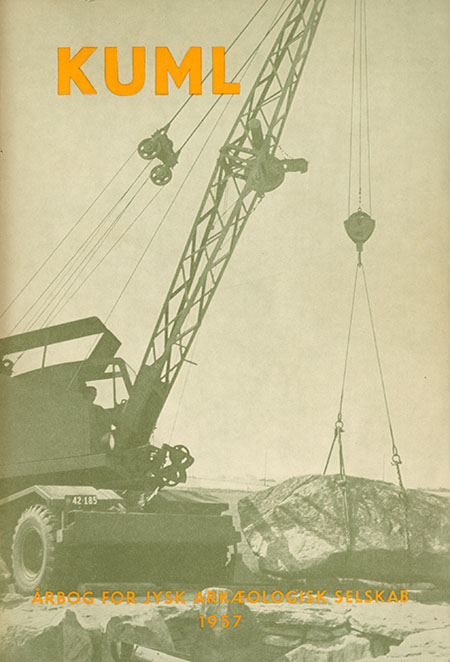En kileskrift fra Bahrain
DOI:
https://doi.org/10.7146/kuml.v7i7.97667Nøgleord:
Bahrain, cuneiform, weight standard, vægt enhed, kileskriftResumé
A Cuneiform Inscription from the Island of Bahrain
In spite of the intense archaeological activity of recent years, Bahrain has been slow to reveal written evidence of its past history. lf Bahrain is indeed identical with Dilmun of the ancient Mesopotamians, an assumption of which there is as yet no conclusive epigraphical proof, it is not unreasonable to expect that further excavation will some day produce cuneiform inscriptions in considerable number. Until recently, however, the only cuneiform inscription ever discovered on the island was a text consisting of three lines, possibly to be read in Sumerian, inscribed on a stone object allegedly shaped as a human foot; the most recent discussion of this inscription was given by Edmund I. Gordon in an article entitled The lnscribed Stone "Foot" at Bahrain (Supplement to the Bulletin of the Philadelphia Anthropological Society, IX/1 [1955], vii f.), where full references to previous discussions will also be found. The present whereabouts of this object, which was found before 1880, is unknown.
In 1957, in the course of the Danish excavations on Bahrain, under the direction of Professor P. V. Glob, new evidence was uncovered to suggest that the island was at one time a province of the Mesopotamian sphere of civilisation. A sherd from the flaring rim of a large clay pot 1) features the cuneiform inscription on the inside of the rim shown in fig. 1 and at the foot of p. 164, i. e., 2 (PI) 4 (bán) 7 sìla.
According to an excerpt from the series e a II, represented by the fragment VAT 9541, iii 28', the Sumerian reading of 2 (PI) is n i m i n a, and the Akkadian reading 2 pani (see B. Landsberger, Assyriologische Notizen, V. Die Lesung des Hohlmasses PI (Welt des Orients, I [1949], 373-376) ). The Akkadian reading of the present inscription would, therefore, be as follows: 2 pani 4 sāt 7 qa. The indication of the capacity of the pot is written inverted in relation to the rim, so that it could be most conveniently read when one tilted the pot toward one and looked down into its interior. In this arrangement, the Bahrain pot differs from wine jars inscribed, with their Assyrian capacity measures recently discovered at Nimrud 2) the Nimrud specimens being invariably marked on the outside of the jar.
The exact connotation of the measure of capacity involved will, of course, depend on the date of the inscription. As reported by Mr. Bibby (see p. 158), the sherd belongs to Level 23 so that its stratification would indicate an early date (late 3. or early 2. millennium B. C.) 3). On this evidence, we are dealing with a measure of capacity where 1 g u r (Akkadian kurru 4) equals 300 s ì l a (Akk. qa), with 5 PI to the g u r. 1 g u r, further, equals 30 b á n (Akk. sūtu), and 1 ban is the equivalent of 10 s ì l a. F. Thureau-Dangin, in Journal asiatique, 1909, 103, calculated the absolute value of the g u r at 121.2 litres, and that of the s ì l a, consequently, at 0.404 litres (ibid., p. 101). The Bahrain pot would, then, have had a capacity of 167 s ì l a (qa), or 67.468 litres. This must, however, for the time being remain a tentative calculation; for it will be remembered that recent calculations on the capacity of a marked jar from Fort Shalmaneser, at Nimrud, provided the equivalent of 184.2 litres to the Assyrian homer (imēru), which comprised 100 qa. This was noted by Miss Barbara Parker in lraq, XIX (1957), 128, who also rightly observed that the sūtu measure varied in the number of qa, and that the qa unit itself might vary between different areas (ibid., p. 127, in note to ND. 5447). Further evidence from Bahrain will be needed, therefore, before an unambiguous interpretation of the present measure of capacity can be provided.
J. Læssøe
Downloads
Publiceret
Citation/Eksport
Nummer
Sektion
Licens
Fra og med årgang 2022 er artikler udgivet i Kuml med en licens fra Creative Commons (CC BY-NC-SA 4.0).
Alle tidligere årgange af tidsskriftet er ikke udgivet med en licens fra Creative Commons.


